Oriental dance according to Semsemah
Thanks Semsemah, oriental dancer and well-known teacher, for answering our interview in a cheerful and spontaneous way.
Can you tell us about your Bellydance journey and how did it all started?
 I grew up with sports. Where I lived, in Pas-de-Calais, this was the only thing to do. And from a young age, I loved dancing. I was a fan of Mylène Farmer, Madonna etc... At home I danced a lot on raï with my sister. Around 4 years old, I was swimming, then a few years later competing, and as a teenager I played basketball. I continued with African dance then hip-hop… With high school friends, we set up a troupe called "TROUPE INES" and we danced during family celebrations or at the end of the year but at that time we did not take lessons because there was no Bellydance teacher in our area at all. We watched Samia Gamal for inspiration.
I grew up with sports. Where I lived, in Pas-de-Calais, this was the only thing to do. And from a young age, I loved dancing. I was a fan of Mylène Farmer, Madonna etc... At home I danced a lot on raï with my sister. Around 4 years old, I was swimming, then a few years later competing, and as a teenager I played basketball. I continued with African dance then hip-hop… With high school friends, we set up a troupe called "TROUPE INES" and we danced during family celebrations or at the end of the year but at that time we did not take lessons because there was no Bellydance teacher in our area at all. We watched Samia Gamal for inspiration.
When I arrived in the capital city of Paris, I lived in an apartment with the main window facing a courtyard and there I heard oriental music several times a week. Then I decided to go see where it came from and discovered a dance hall right there, downstairs, in my courtyard! It was like a sign of fate! Right away I signed up for a class with Nora and I remember her saying : "You, you dance well… but you don’t know how to dance". After just a few months, she got me started in Parisian and provincial restaurants and I was dancing almost every night and especially on weekends, non-stop. These were the days... After, I met Najat who also taught me a lot. Then I trained with Mayodi, Leïla Hassan, and finally Sana.
What is the "Sem Touch"? What really characterizes your style and beliefs in the world of Bellydance?
 To me, the "Sem Touch", it’s me, it’s MY dance ! Because it is my soul, my body, my heart that I put to use in dance. I don’t try to look like someone because this would be wrong and I’d feel it. I must feel free, comfortable, breathe, live. Oriental dance has codes, but we can go beyond them and indulge in what our body dictates. For example, on a baladi, nothing stops us from doing footwork on the accordion as long as we know the baladi’s essence (this is the basis) and that we put in the right energy and have the right attitude. You must be open to other dance styles while staying authentic.
To me, the "Sem Touch", it’s me, it’s MY dance ! Because it is my soul, my body, my heart that I put to use in dance. I don’t try to look like someone because this would be wrong and I’d feel it. I must feel free, comfortable, breathe, live. Oriental dance has codes, but we can go beyond them and indulge in what our body dictates. For example, on a baladi, nothing stops us from doing footwork on the accordion as long as we know the baladi’s essence (this is the basis) and that we put in the right energy and have the right attitude. You must be open to other dance styles while staying authentic.
You regularly give Shaabi workshops, among other things, can you tell us more about this style of oriental dance?
 One of the pioneers of Egyptian shaabi music is ADDAWEYA who sings festive and popular music. There is also an artist I like a lot ”Shabola” (Abdelrahim SHAABANE) who has very committed but also lighter songs that I love. I like it when music goes all over the place, gets catchy, crazy, a little bit like the music of Abd Elsalam, the very trendy organist in Cairo.
One of the pioneers of Egyptian shaabi music is ADDAWEYA who sings festive and popular music. There is also an artist I like a lot ”Shabola” (Abdelrahim SHAABANE) who has very committed but also lighter songs that I love. I like it when music goes all over the place, gets catchy, crazy, a little bit like the music of Abd Elsalam, the very trendy organist in Cairo.
My favorite shaabi dancer is Camelia who never stops inspiring me. The shaabi is danced in a sensual, flirtatious, playful way and with a relaxed, nonchalant, and sometimes masculine attitude in my case.
I’m also a fan of street shaaby which is performed on mahragan music (festival in Arabic) where you can dance in a more modern way, bringing a little touch of hip hop among other things. I discovered this dance in Cairo about 10 years ago. I learned by watching several videos. The dancer Hakim and I were the first ones to dance street shaaby on stage in a theater, we had a blast that evening ! Then I got better and learned a lot from the master in this domain, Kareem GaD.
You also offer Bellydance lessons for the Bachelorette Parties, how do you teach oriental dance to a non-expert audience?
 I love introducing oriental dance to women at these events because they are calling for it and curious. They are really attracted to Bellydance but will not necessarily sign up for regular classes. This is a one-time story, to party, have a good time for an hour or two. Some of them sign up for the year because they really fell in love with it, but this is rare. I only teach them a few basic movements accessible to all. For example, the back eight, the sharqi step (step front - behind or as I call it "I go, I do not go"), the side hips accents, undulations, the shoulder accents and often I show them the shoulder accents on the Allaoui, music from my region in the north-west of Algeria. I can tell you that they are on fire!
I love introducing oriental dance to women at these events because they are calling for it and curious. They are really attracted to Bellydance but will not necessarily sign up for regular classes. This is a one-time story, to party, have a good time for an hour or two. Some of them sign up for the year because they really fell in love with it, but this is rare. I only teach them a few basic movements accessible to all. For example, the back eight, the sharqi step (step front - behind or as I call it "I go, I do not go"), the side hips accents, undulations, the shoulder accents and often I show them the shoulder accents on the Allaoui, music from my region in the north-west of Algeria. I can tell you that they are on fire!
They feel like women, feminine, sensual during one lesson and I'm sure it still stays with them afterwards!
What do you like to wear during your Bellydance lessons and workshops?
I think I have an offbeat style! Since footwork is part of my dance, I like for you see the knees, so I prefer short skirts to long Bellydance skirts which cover them. When I teach oriental dance, I like to see my students’ knees so I prefer that the girls wear leggings. Personally, I’m not a fan of Bellydance outfits. I like to distort clothing. For example, I can make a nightie look like a pretty scarf for the hips! However, I like your short skirts a lot especially this brown leopard model.
Let us talk music, what is the oriental song that moves you the most, the one which makes you happy, and the one that you can't help but dance to when you hear it?
 These are very difficult questions because I love all kinds of music, but classical, learned music obviously moves me the most... Abdel wahab, Oum Kalthoum. If I had to choose one,it’s "seret el hob" of Oum Kalthoum. It passes on lots of emotions, pain, madness, hope… and love.
These are very difficult questions because I love all kinds of music, but classical, learned music obviously moves me the most... Abdel wahab, Oum Kalthoum. If I had to choose one,it’s "seret el hob" of Oum Kalthoum. It passes on lots of emotions, pain, madness, hope… and love.
The one which makes me happy is "Warda", and of course the shaaby but by answering you I realize that music in general and in all styles makes me happy! Music moves me, makes me cry, makes me happy, nostalgic, crazy. Whenever I hear music, I cannot help but dance!
With what other dance could you fall in love and why?
The tango, salsa, flamenco. That's 3 dances so in the end I would choose salsa: festive, intoxicating, and sensual!
Discover Semsemah in a video :



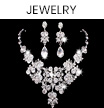
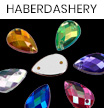
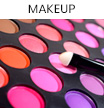

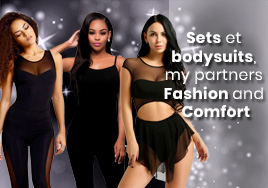

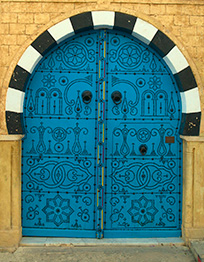
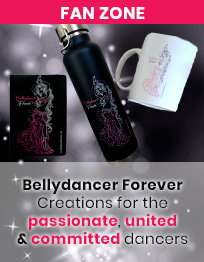
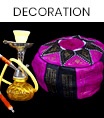

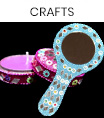
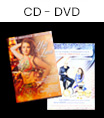
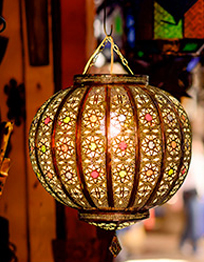


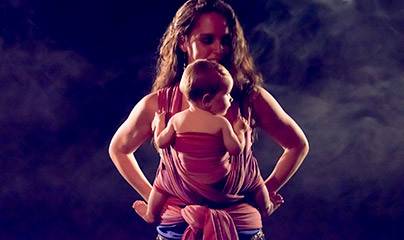
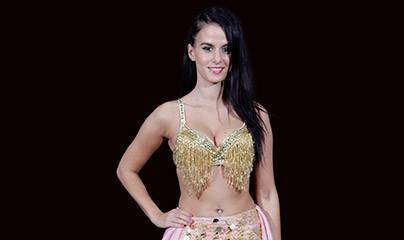
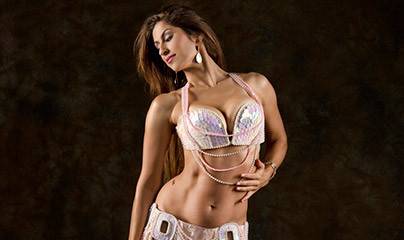
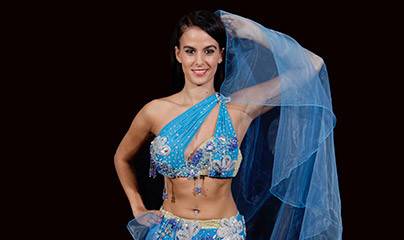
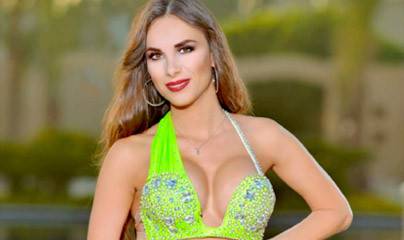
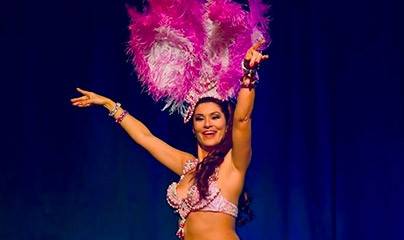
Leave a comment
Login to post comments